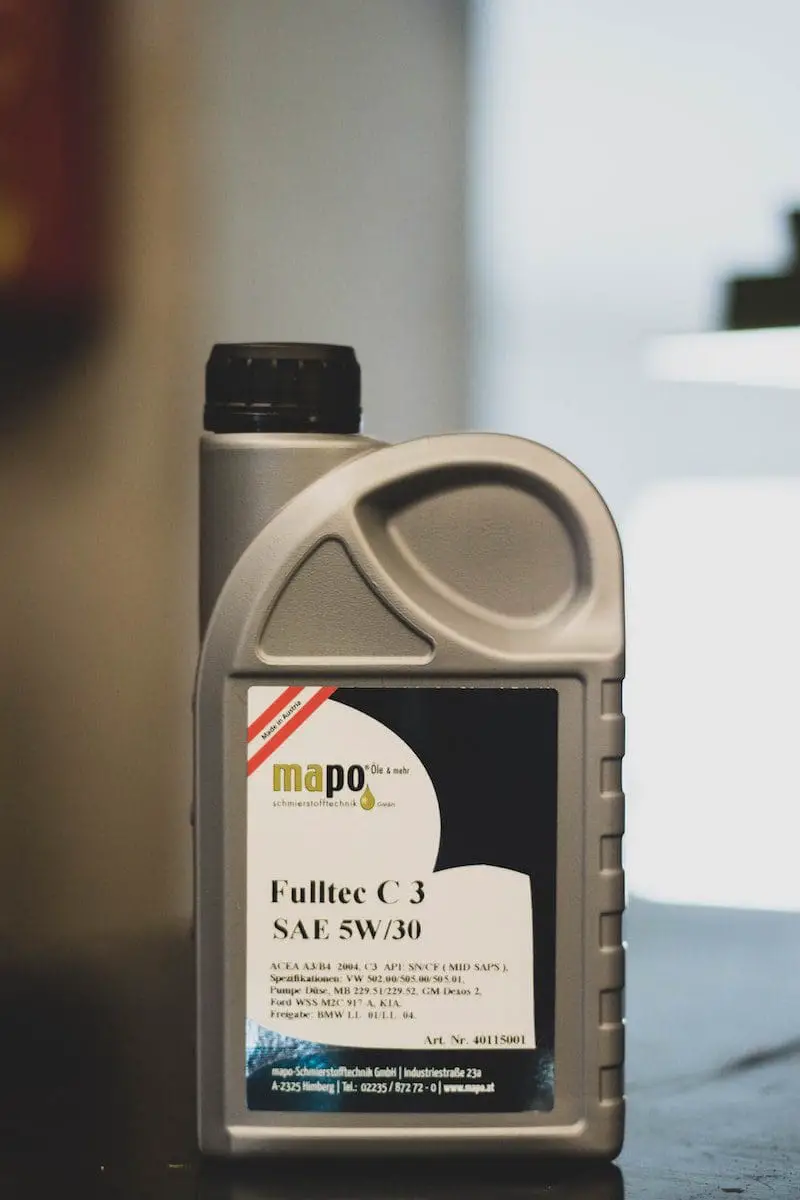Motor oil is described as a substance added with additives in several amounts with are used as internal combustion engine lubrication.
The sole purpose is to reduce tear and wear and friction from the engine’s every moving part. One of the vital ingredients is detergents due to their ability to improve piston sealing.
Motor oil includes several brands, types, prices, etc. The importance of correct motor oil selection is a must, especially for reliable, long-lasting, and stable operation of a car engine as well as in the long run its protection.
In this article, the chief aim is on differentiating 5w30 and 0w20.
Key Takeaways
- 5W30 motor oil has a higher viscosity at operating temperature than 0W20, making it suitable for a wider temperature range.
- 0W20 motor oil improves fuel efficiency and reduces engine wear more effectively than 5W30 in colder climates.
- 5W30 motor oil is more compatible with older engines, while 0W20 is designed for modern engines with tighter tolerances.
5w30 vs 0w20
The difference between 5w30 and 0w20 is their viscosity. The viscosity 5w30 is 1.7 times higher in comparison to 0w20. Due to this 5w30 usage is preferable in warmer weather, and driving modes are linked with idle time’s long period in traffic jams.

5w30 is commonly used for diesel and petrol engines in light cars and small sedans. Due to its flowing easily incredible quality with the viscosity grade ranges from 5- 30, and that’s why it is fully capable to serve.
5 is the lowest viscosity level, while the highest is 30. Due to the extraordinary performance, the 0w20 oil is getting famous in the market.
This oil through the engine flows smoothly in winters which enhances the vehicle performance. Moreover, the engine reduces waste by using 5w30 hence saving the environment.
Comparison Table
| Parameters of Comparison | 5w30 | 0w20 |
|---|---|---|
| Temperature range | -25°C to 25°C | Up to 68° F |
| Mileage | More than 75,000 miles | 10,000 miles |
| Density | Thicker oil | Very thin |
| Motor efficiency | Less in comparison to 0w20 | Increase by roughly 10 to 12% compared to 5W30 |
| Brands | GoMechanic, Bosch, MANNOL, Idemitsu, and Mobil | Amsoil, Castrol, Maxima, Mag 1, and Valvoline |
What is 5w30?
The 5w30 is an overall preparation that in an environment can function where there are extreme heat and colds. This engine oil assures every machine user of good low-temperature protection and good start-up.
It is highly fuel-efficient, which creates on the moving engine parts less drag. In a 5w30, 5 represents the oil’s viscosity at 5 degrees Celsius low temperature.
W depicts the winter. At last 30, describes the oil thickness at the engine’s operating temperature.This kind of oil is used very widely and most times accepted by machine users specifically car users.
This oil is preferable due to its availability at certain places with warm winters. In regular lubrication stores, they are easier to find.
5w30 is fabricated from machinery usage situated at a location with lower than -22 degree F temperature. Some automotive engineers also recommend 5w30 to increase fuel economy ratings.
While putting 5w30 oil in the vehicle it is vital to make sure it suits that vehicle. It is capable to protect the engine and also its component.
It offers greater mileage and reduces fuel consumption it improve fuel efficiency. While traveling long distances, 5w30 is also helpful.

What is 0w20?
0w20 oils are mainly known as low viscosity oil. This specific oil kind is becoming common in the market amongst users because it delivers the best performance.
Readily it means that the 0 oil will flow better and well at a cold temperature even while maintaining the same viscosity.
On the label, the 0 before the W is described as the oil’s viscosity when the engine is cold. Meanwhile, the W describes winter. In the end, the 20 represent the oil’s viscosity at a higher temperature than the automotive engineer’s society.
The 0w20 is also described as the multi-viscosity oil due to its ingredients of special additive’s certain amount to make it have distinctive.
Viscosities become higher during summer, and the viscosity becomes lower during winter.
Every day cars in thousand number in factories are replaced with this synthetic oil for overall engine performance improvement. In the world, it improved environmental conditions where the pollution rate always seems to be escalating.

Main Differences Between 5w30 and 0w20
- More friction is offered by 5w30 compared to 0w20. With the reduced friction 0w20, it led to lower engine temperature, which aids to reduce deposits of high temperature on the cylinder walls and also keeps the engine clean.
- The benefit of using 5w30 is that when the engine is started it can flow freely enough at low temperatures at cost as well as protect the internal components of an engine. Conversely, the merit of using 0w20 is that it prevents viscosity breakdown and offers better fuel efficiency.
- In terms of disadvantages, 5w30 is not the best option for vehicles involved in frequently hauling heavy loads or frequently city driving. On the other hand, 0w20 for an engine is unquestionably safe as there is no evidence that engine wear rates have increased.
- 5w30 oil is used in light-duty petrol as well as diesel engines. Passenger cars, trucks, light vans, and SUVs are some of the kinds of vehicles suitable for 5w30. Meanwhile, 0w20 is commonly used for gasoline engine cars and modern petrol, but it is not recommended for aviation and two-Wheeler vehicles.
- When it comes to viscosity, 5w30’s viscosity is 1.7 times higher in comparison to 0w20. That’s why 5w30 usage is preferable in warmer weather and driving modes linked with idle time’s long period in traffic jams.

References
- https://link.springer.com/article/10.1007/s10876-007-0144-7
- https://www.sae.org/publications/technical-papers/content/2002-01-3530/
